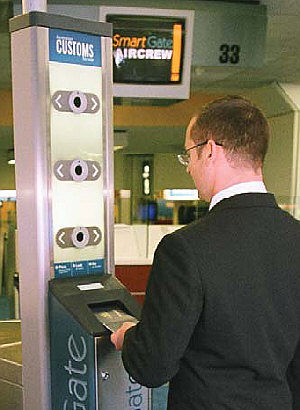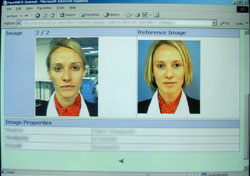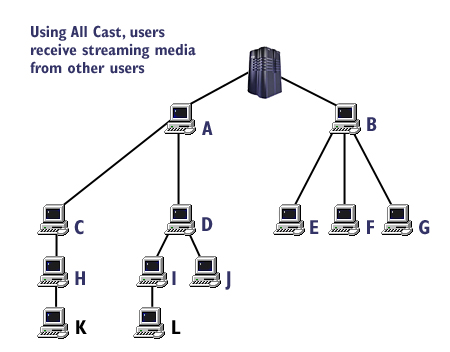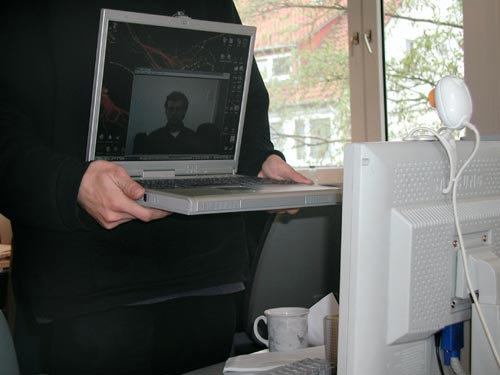
| Video Technology Magazine | October 2005 |
Back in June 2004 I did a lineup of many of the Portable video players on the market. Many Rumors of a Video iPod were floating around, ZDNET had an article that's now gone titled, "Jobs quashes iPod movie-player rumor".
There are now 100's of different portable video players already on the market, more then can be kept track of, mostly coming out of China and probably far easier on the wallet. The amazing thing as usual is Mac People will think this is really high tech, way ahead of everyone and somehow superior, but what's new Mac users have always seem to think that their 2.7 GHz PPC is better then my 3.8 GHz P4 that cost me a lot less...
The Video iPod feature 2.5-inch TFT color LCD and can hold up to 15,000 songs or 150 hours of video. The 30GB and 60GB models retail for $299 and $399 respectively and come in either black or white. The screen is small for portability but users can use an S-video cable to connect the iPod to TV. Apple supports video podcasting
From ZDNET article June 2004:
SlashDot: iPod Video Coming to a Car Near You
Adam Curry, the father of Podcasting, podcast about Apple Video iPod announcement

SmartGate is a system developed for Australia Customs that verifies a person's identity, using face-recognition technology. Australia Customs is chose face recognition as it is considered the least intrusive biometric measure and has been found to have a high degree of accuracy when used in the controlled environment that Smartgate creates. Face-recognition technology uses a mathematical formula to determine whether a live image of a person matches the electronically stored image of that person. Commonly used biometrics include: finger print, iris, hand geometry, voice recognition, face recognition. Most of these are based on Video and Image processing.
 SmartGate uses software from a German company, Cognitec Systems. Cognitec's FaceVACS software is the key component of the system. SmartGate Statistics as of 21 March 2005:
* Over 6400 selected Qantas frequent flyers have enrolled in the SmartGate trial
Partly it's due to the developers work environment. The software developers are on PC's with a camera connected and don't take into consideration, real environments. So they develop and Tune a system based on a camera looks at themselves! As so as these are operating in Uncontrolled environments, like replacing a computers password system where there are is no humans monitoring transaction, these systems could be cheated. Another case which had failed miserably was using face recognition on CCTV cameras, against random people walking by. Sunglasses would defeat the system, also many false positives would occur, because lighting the angle and lighting the faces were observed from would vary. In the SmartGate application this isn't a problem. There is only once face to compare against, the holder of the passport. Lighting is controlled, the position of the person is controlled and human observers are present to prevent a person from holding up a photograph instead of there face. One step better would be to use stereo vision, Dual cameras, to get a 3D view of the person face, hand, or eye that's being measured, this would allow for a 3D match rather then a 2D. Also require some movement, like have the person say a word, and look at the face move! Maybe even the pattern of lip movement. Heck throw in Voice recognition also. When this is done by a real human, these simple things are also taken into account, but are so obvious they are often over looked or not considered by software developers that often have a single minded view of a problem.
Defeating a Camera
Drawing a Blank: The failure of facial recognition technology in Tampa, Florida
Other interesting LinksNYC Surveillance Camera Project
According to Macrovision, they have the ability to insert two types of files into a P2P network, files called "Sinkholes" and just plain fake files. The "Sinkholes" will appear to be the correct file but never downloads, hanging the downloads and hence, making them not work. While the fake files just hold white noise or static, nothing at all or related to what the user tried to download. They will be targeting the major networks like FastTrack and eDonkey, but surprisingly not the BitTorrent protocol. "The recording, movie and game industries are hoping to disrupt activities on P2P networks by flooding them with fake files and corrupted search results" Apparently, The Hawkeye system tries to hamper P2P networks by flooding networks with false information and Macrovision claims that it also has the ability to halt downloads or provide files that contain nothing but random noise or silence. Hawkeye protects video content via "a combination of Macrovision software and operations personnel who constantly monitor and block attempts at piracy on file-sharing networks worldwide."

Sony Communication Network Corporation announced their coming Mobile VOD service "Portable TV" . Download contents via broadband to Memory stick, enjoy high quality videos on PSP or other supported devices. Sony Computer Network (service name: So-net) is going to provide "H.264/MPEG-4 AVC" format high quality video content download service via user's PC to memory stick, and let users enjoy dramas and animes from this VOD service called "Portable TV" on Sony PSP and other video player devices at anytime, anywhere. The service is opening on July, 27th. The service "Portable TV" by So-net has got various supporters for vast categories of video source contents for users to choose and download to memory sticks very easily.
At the early stage, the contents are free for download. Movies, music, and a variety of charged contents are scheduled to be added gradually in the future.
An unfortunate side effect of this is that it makes doing anything innovative and "high Tech" nearly impossible if it means changing the business model. Most of us are well aware of the on going hoard of lawyers that have been launching attacks against the P2P community such as Napster and Kazaa, but when even when a Major player such as Disney attempts to break new ground by doing a distribution deal with Apple they get attacked on all sides.
From: TechDirt.com
[09:36] sokolvideo: Havent' see to many stand alone units Just capture and play back on a PC, using a TV-Out video card such as an ATI-Radion. [09:37] cbca----: I have a PAL PlayStation2 [09:37] sokolvideo: Get a Pal TV. [09:37] cbca----: :) [09:37] sokolvideo: can probably wire some VGA monitors to accept it. [09:38] cbca----: yup.... need to search the Internet for circuit diagram [09:38] sokolvideo: http://www.starkelectronic.com/vga300.htm [09:39] cbca----: thx [09:40] sokolvideo: Actually check HSC and Weird stuff electronics in the Bay-area, also software n stuff [09:40] cbca----: whats HSC? [09:40] sokolvideo: Halted Specialties [09:40] cbca----: k. [09:40] sokolvideo: on Lawrence and Central expressway in Sunnyvale [09:41] sokolvideo: Weird stuff on on Carribian , take Lawrence North it will loop around and change named. [09:41] sokolvideo: Software n stuff in off the 101 somewhere near San Thomas expressway [09:42] cbca----: gotcha [09:43] sokolvideo: www.halted.com www.weirdstuff.com www.surpluscomputers.com [09:57] sokolvideo: http://www.converters.tv/products/converters/video_to_vga_converters/.html [09:57] sokolvideo: http://elm-chan.org/works/sc/report.html [10:01] sokolvideo: !!! -> http://ps2modchip.com/search.php?page=contact [10:01] sokolvideo: http://www.lik-sang.com/info.php?products_id=1457&AID=10273941&PID=952086 [10:03] sokolvideo: $50 http://www.goldenshop.com.hk/AI-trad/pc/m_vgabox.htm & [10:04] sokolvideo: http://www.goldenshop.com.hk/AI-trad/Misc_htm/m-vgabox.htm [10:05] cbca----: thx
|
Peer-ro-peer is the single largest consumers of data on ISP's networks. Peer-to-peer traffic significantly outweighs web traffic. 46.77% of BitTorrent traffic is video 11.05% of all BitTorrent transfers are audio. AOL/Moviefone is using Kontiki's video-on-demand solution to deliver DVD quality movie trailers to Internet users. The trailers can be accessed on demand or can be delivered automatically in the background. This services is called MoviefoneHRD, (High Resolution Download) and is under what they call Full-Screen these trailers about 25 to 30 MegaBytes in size with a resolution of approx 800x384 at 2Mbps and plays using the Windows Media Player with DRM. Since the demise of Napster, P2P (peer to peer) has been a dirty word, villianized by the press. Kontiki calls their system "Grid Delivery Technology", but it's really P2P, not much different from Bit Torrent or Napster from a technology Point of view.

P2P really come in two flavors. File transfer, and Streaming. File Transfer P2P came to the publics awareness with Napster in 1999 but actually dates back much earlier to Store and Forward based systems. UUCP (Unix to Unix Copy Program) often referred to as the USENET (more info) dates back to 1978 and is first popular P2P system. At the users request it would share files over phone lines using modems. A file might go many hops from computer to computer by modem to avoid telephone long distance charges. Later TCP versions were developed to bridge data across the early ArpaNet (pre-internet). Huge files could be requested and fetched this way. NetNews was originally build on top of UUCP before NNTP and was the first "free for all" file swapping system, very similar to Napster, especially with it's hit or miss approach. The real difference now is that modern P2P is fast and convenient.
Streaming P2P is a relatively new technology. But then so is Streaming in general which didn't take off till 1995 with the Livecam and Xing Streamworks(sold to Real long ago).
Streaming P2P has some advantages and limitations. No files are ever kept or stored, bits arrive and are sent right back out, so content is well protected. DRM doesn't really apply the same way it does in File sharing networks, or progressive download based systems.
Firewalls can get a bit trickier to pass data through then regular P2P also.
With no QoS across the public Internet backbone, TCP or UDP streaming is unreliable. With P2P where each Peer passes data along, any transmission problems are compounded with each hop. TCP stalls, which will just slow a file download but it stop cold a video stream. With UDP( and RTP), raw packets are passed along like hot potatoes, with each hop some packets will get lost, so as the number of hops increases the number of lost packets is compounded. QoS or Quality of Service protocols such as RSVP are meant to give a higher priority to your streaming data packets, but this isn't practical on an insecure public network like the internet where it's too easy to abuse. Here is where Erasure codes save the Day. Also knows as FEC (Forward Error Correction) or ECC (Error Correction Codes), lost packets can be reconstructed from added data in the stream.
Don't kill the PIGS
I have come to realize that if you take advantage of the fast peers, they will not run that P2P software very long. Just because a peer could do 100 MBps doesn't mean it a free resource and take full advantage of it. Most US Cable Modem and DSL subscribers get unlimited flat rate bandwidth use, but T1, T3 and other fast connections do not.
Looking at the P2P players, it's hard to trudge through the debris field of the dotcom crash to see who is still alive, and what technology has been salvaged. P2P was just starting to come of age when everything collapsed.
Commercial products
Open Source projects
Academic projects
If I have missed any, please let me know.
"Present streaming models bleed cash when you stream," said Hudson. "The more popular the content the [faster] you go out of business." With CenterSpan, he said, "the more popular the content, the cheaper it becomes to host it." ( from: Peer-to-Peer Streaming Finds Friends StreamingMedia.com ) This isn't exactly true, but you need to be charging, see my paper Economics of Video and the Internet. Companies like Kontiki, Blue Falcon and Centerspan Communications, and ChainCast with P2P services could supplant content delivery networks (CDN) such as Digital Island and Speedera with lower cost technology. Non-streaming P2P worth mentioning
Brilliant Digital Entertainment, FastTrack P2P, now renamed to ALTNET SwarmCast Sold to the now dead OpenCola Yet another side note, Patents US Patent #5461624 - "Distributed routing network element" - Alcatel Network Systems, Inc. US Patent #5884031 - "Distributed Routing" - Allcast US Patent #6249810 - "Method and system for implementing an internet radio device for receiving and/or transmitting media information" - Chaincast US Patent #6633901 - "Multi-route client-server architecture" - PSS Systems US Patent #6901604 - "Method and system for ensuring continuous data flow between re-transmitters within a chaincast communication system" - Chaincast
If you think these patents will hold then read US Patent #6368227 - "Method of swinging on a swing" before you panic... see US Patent office to see patents.
Al Jazeera International Opts for Vizrt Graphics HDNet Films Mark Cubans HDNet satellite HDTV network has now spun off a Film company. I hate to go off topic, but check out "The War Within" . WikipediA - Streaming media Excellent entry Alluvium is a technology for doing low-cost streaming media broadcasts. It uses a very different approach from existing streaming servers. All that is needed server-side is a standard web server.
Fish : misc. audio streaming. (Freenet developement)
onlinereporter By Rider Research, in Baton Rouge, wonder how they are doing after Katrina? Open P2P News from O'Reilly book publisher Surplus Computers Has a Hitachi PD1 42-inch Plasma Displays panel for $699.99 On Sale!
|
|||||||||||||||
Copyright © 2005, John L. Sokol
|
|




